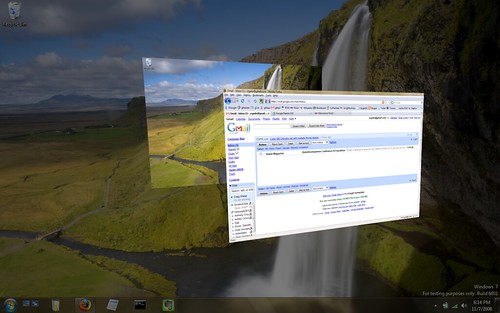The Windows 7 calculator is quite a bit more useful than the calculator in Vista or XP. If you've been wanting to give it a try and don't want to or can't install Windows 7, you can now install it under Vista. I've tested it, and it works very well. Link
Tuesday, November 11, 2008
Snowboarding and the art of Social Activity
This winter, several of my friends and I decided to get season passes to the local Ski resort. When my dad heard about this, he questioned it by saying, "I thought you didn't like snowboarding?" While this isn't completely accurate (I have never been snowboarding before), it got me thinking. How much of what we do is not about the activity itself, but rather the people we do it with? And, how often do people mildly affected by Asberger's syndrome (such as my father and I) miss this detail.
Most people have probably found themselves going to a movie or some other activity, not because they really wanted to see that movie, but because their friends we're going. I personally feel that I have missed this many times, and focused more on the activity than the people.
How do you think this affects the relationships of those who have mild Asberger's? Let everyone know in the comments.
Monday, November 10, 2008
Part 1: Building a Multi-Purpose Home Server
 Over the next 6 weeks, we'll be doing a series of posts on setting up a home server. The goal of this server is to be multi-purpose, reliable, and (most importantly) low budget. We will be covering each the following topics:
Over the next 6 weeks, we'll be doing a series of posts on setting up a home server. The goal of this server is to be multi-purpose, reliable, and (most importantly) low budget. We will be covering each the following topics:- Selecting & Building the Hardware
- Installing the OS
- Samba File Sharing
- Apache2 Web Server
- Subversion Version Control
- Hamachi
- 3.0GHz Pentium 4
- 2x 1GB DDR2 Ram
- Optical Drive (for installing software)
- 2x 500GB Hard Drives
- Supported Motherboard
- RAID card (optional)
That's it for this week. Coming up next Monday, we'll install Ubuntu 8.10 Server on our newly built hardware.
Free (as in speech) vs. Free (as in beer)

- Ubuntu
- openSUSE
- Mint
Friday, November 7, 2008
Windows 7: First Thoughts

A Netbook should not have a 15.4" screen. That's the first thing I thought when I stated using the HP Compaq 6715b with Windows 7 installed. It has a slow processor (1.6GHz Turion 64 x2), almost no RAM (1GB 667MHz), and a small Hard Drive (80GB 5400rpm). Essentially, it's an EEE PC with a big screen. The very thought of running Vista on it makes even the most dedicated Windows user shudder. Surprisingly though, Windows 7 is useable on it. For example, while I'm writing this (running Firefox 3.0, Evernote, Task Manager, and MS Word 2007) Windows is using 1% processor and 716MB RAM. Not bad considering a Vista system uses ~1.5GB right after boot up. Boot up also seems to be quite a bit faster than Vista.
The new super bar is currently my favorite feature. It allows you to pin program shortcuts right to the bar. If the program is not running, clicking the shortcut will start it. If the program is running, the shortcuts work to show/hide the window. If the program has more than one window open, hovering over the shortcut displays a preview of the windows, which you can then select.
The hardware detection worked great, probably a little better than Vista's. I was sure that the 6715b's touch controls for Wireless and Volume would not work out of the box, but surprisingly they do. So far the only thing hardware wise that I do not like is the 6715b's keyboard; the space bar only registers about half the presses. Other than that, it's great.
Post by: Craig Weber
PDC: No, Windows 7: Yes
Unfortunately, no one here could make it to PDC or WinHEC this year. So while we didn't get a nifty 160GB hard drive full of press kit materials, we did manage to get a hold of Windows 7 x64 build 6801. Over the next few weeks I'll be testing this build as thoroughly as possible, by completely replacing my normal Vista/Ubuntu laptop with a laptop running 7. General tasks will include web browsing (Firefox 3.0), photo-organizing (Adobe Lightroom 2.0), photo-editing (Adobe Photoshop CS3), programming (Eclipse), and writing (MS Word 2007). System specs follow; notice, as Windows 7 is supposed to use significantly fewer system resources, the Windows 7 laptop is much slower:
Vista Laptop (Dell Inspiron 1501)
- 1.6GHz Turion 64 x2
- 4GB 800MHz DDR2 RAM
- 160GB 5400RPM HDD
Windows 7 Laptop (HP Compac 6715b)
- 1.6GHz Turion 64 x2
- 1GB 677MHz DDR2 RAM
- 80GB 5400RPM HDD


